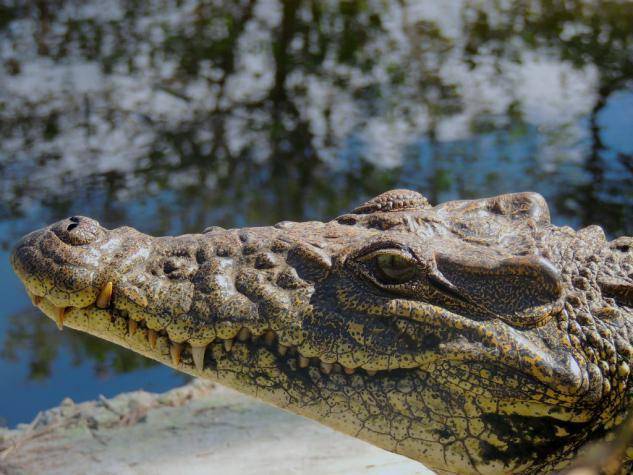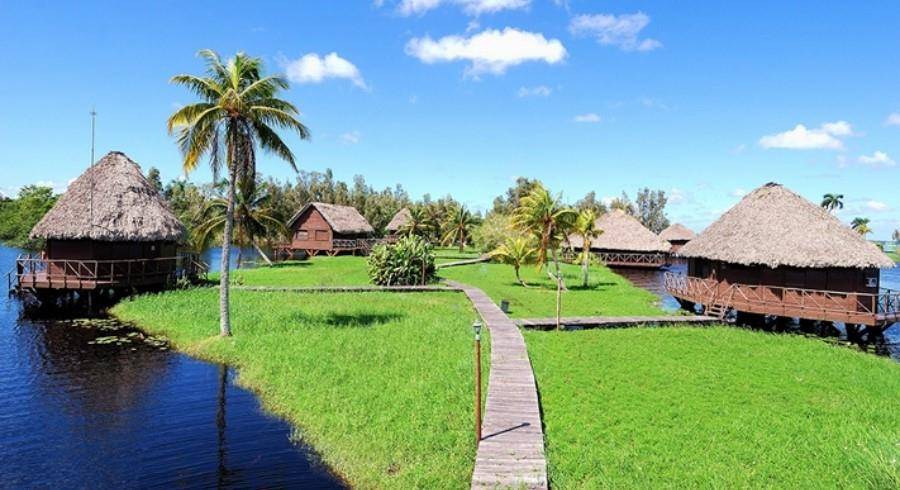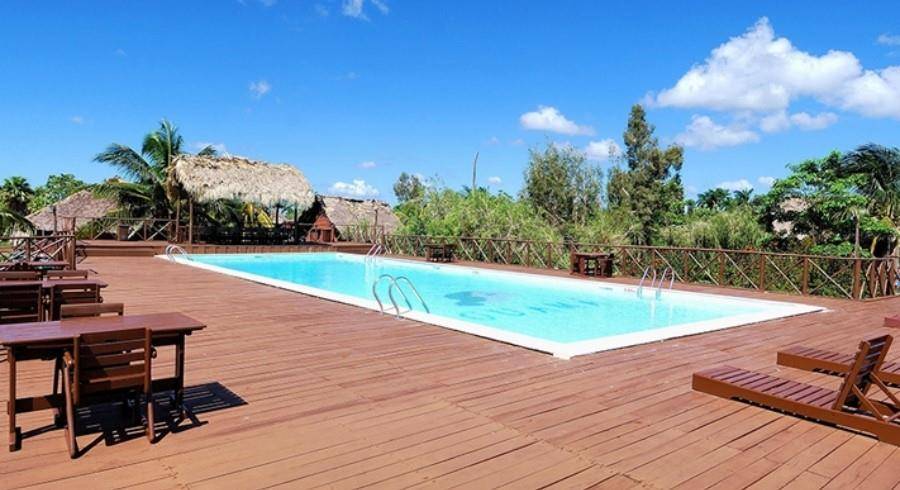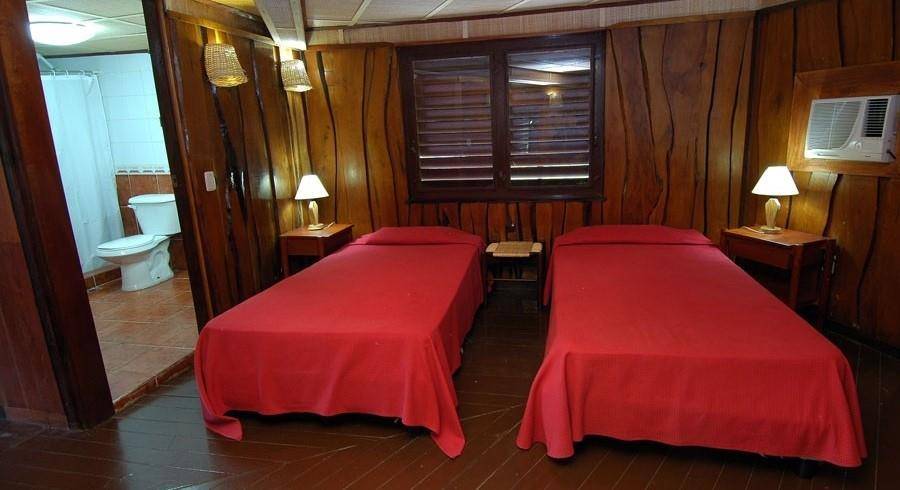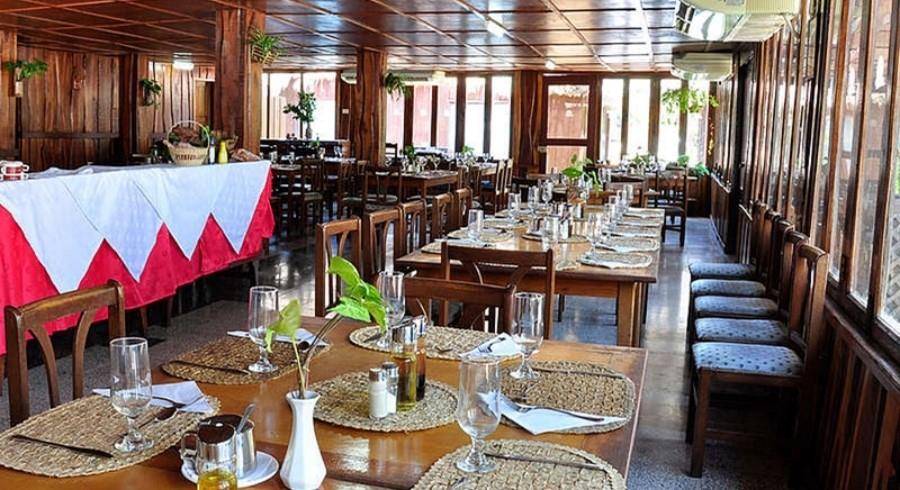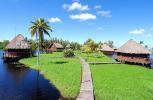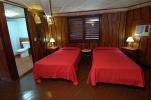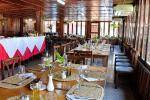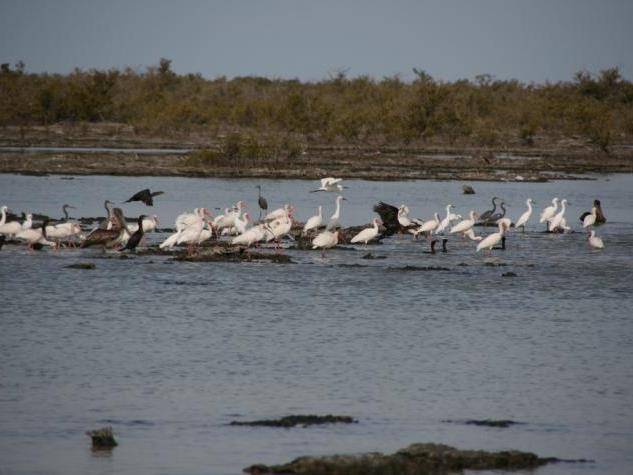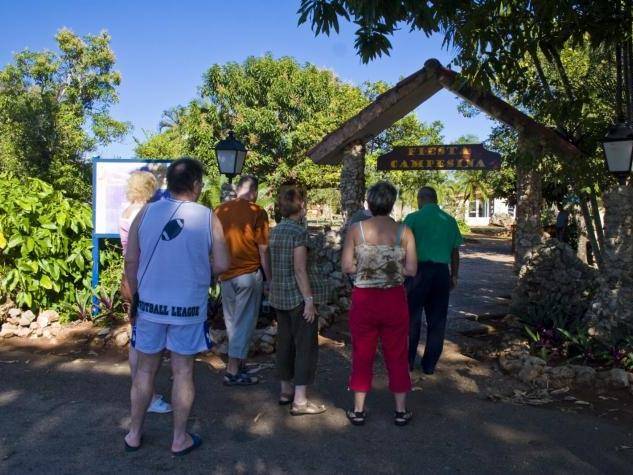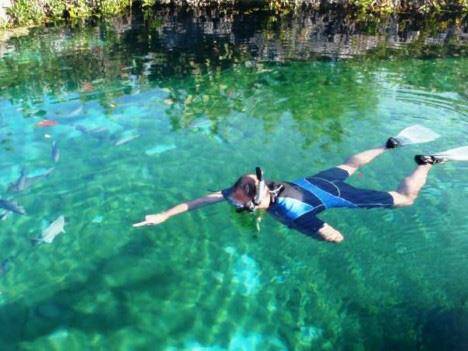About
Villa Guama
Whether you seek adventure or want to get back to nature, you will have a memorable holiday in a peaceful, timeless location at Guama hotel.
Guama is a unique complex in the midst of Zapata National Park’s Treasure Lake, set around six small islands. Most buildings are on stilted huts above the water which is surrounded by a forest teeming with wildlife. Though only a 2-star complex, there is an element of James Bond-like adventure to the whole place; from arriving in your own speedboat to the nearby attraction of the crocodile farm.
Guama is especially suited to nature lovers & a paradise for bird-watchers in particular with organised tours by boat & land. There is also daytime & evening entertainment available, though many guests come just for the tranquillity. Facilities include a swimming pool & boat hire, while Guama hotel has two bars & a restaurant serving excellent food including lobster, crab & crocodile, though it can be a little expensive with limited choice.
The location is probably better suited to shorter stays, with mosquito repellent a must, but Guama is a unique, picturesque complex which is highly recommended for bird & nature enthusiasts, as well as anyone with a sense of adventure.
